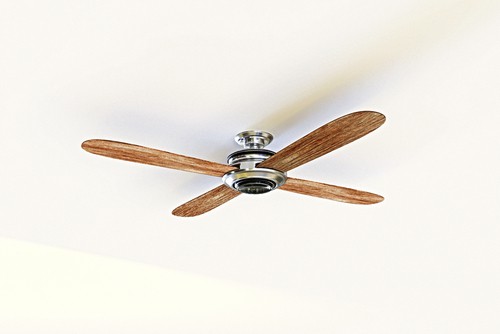Ceiling Fan Direction – Which Way to Spin?
You have owned a ceiling fan before, haven’t you? If you have, have you ever wondered what the directions it spins means for its effectiveness? Perhaps the most commonly asked question deals with which direction your fan should be running. If you install a new fan or move into a new lodging with a fan that you are unfamiliar with, how do you learn about it? If you don’t recognize any switches or buttons, you don’t have the instruction manual, and you feel lost, don’t worry—just consult this friendly ceiling fan guide.

The Bottom Line of Ceiling Fan Direction
Despite how confusing and difficult to understand certain fans may be, the directions they spin stay constant regardless of the model. That is just how air circulation works.
4 common rules
- You can determine the direction of a fan by looking up at it.
- In the months of summer, the direction of the fan ought to be straight down (in a counterclockwise direction) so as to cool the room or space through the cold-wind effect. The speed of the fan should also be at average or high to ensure that you remain properly cooled in hotter weather.
- When it comes to the months of winter, however, the speed ought to be installed at the low level (and in a clockwise direction) pushing the warm air up towards the ceiling. This will keep you warm.
- Additionally, it is important to make sure that you turn off the light and the accompanying ceiling fan when you leave the room to conserve energy.
Something to note
It is necessary to be careful if you want a ceiling fan to blow onto a food table or to keep going all night when you are sleeping. If it is not completely necessary for you to have it on the highest option, feel free to turn the power down to save energy and not become too powerful to the point that it blows papers, food, or other, miscellaneous object around the room.
For reasons relating to its convenience and comfort, the ceiling fan has obviously become a very popular appliance. Even if you’re a sincere fan, it is still important to know when/where a ceiling fan is most helpful, and when it can be detrimental—namely, the kitchen. If you aren’t careful when using a powerful ceiling fan in your kitchen, it can, and will, affect your cooking. In many situations, a poorly-placed fan has been known to blow and exhaust flames and end up greatly altering the cooking process.
If you have a large room, or multiple ceiling fans: A wise suggestion for those individuals using multiple fans in one room—as many restaurants use in their dining rooms, they will set all of their fans to run in reverse. This not only has a cooling effect on the food, but also promotes air circulation within the room that will stop the air from getting stale, old, or holding too much smell within it.

Outdoors: As is the case with most people, the outdoors is wonderful—if we ignore the undeniable issues of humidity and bugs everywhere. In the majority of the cases, ceiling fans will be used during the summer to help cool things down. The straight down, counterclockwise motion will help alleviate the heat and distract bugs away from you if you’re lucky. In some other cases (depending on the structure of the rooms or areas that you will set up), you could still get similar efficiency, by the way, if you install a winter ceiling fan system and use the steady flow of air during even the coldest months to keep bugs away. Additionally, if anyone smokes at an outdoor party, the installation of a winter ceiling fan system will make it possible to draw the smoke up and away without blowing it around and disheveling it into everyone’s faces around you.

Saving energy
If you’re looking to save energy while using a fan for both heating and cooling systems, it is complicated, but our research shows that such savings are possible—and can be up to 10 percent! This starts with understanding when to have your fan turned on and which direction to have it facing (as seen in the 4 common rules explained earlier.)
In summer, it is nearly a necessity to have your ceiling fan on. Not only will the entire room feel better with the cool air provided by your ceiling fan, but air circulation will always be key in the hotter months. Based on a large number of studies, everyone feels comfortable and easy-going when using the fan with the AC setting at the highest level. That is simple; everyone loves to be cool.
However, let’s remember that a ceiling fan only operates effectively when there are people in the room. Vice versa, you ought to turn off it if no one is in the room to work towards that 10 percent energy-saving level mentioned earlier. Essentially, you should turn on the ceiling fan to enjoy the cool-wind effect when you enter the room, and then when you (or whoever the room’s occupants are) leave, turn it off and enjoy the significant energy savings you’ll encounter as a result.
In winter, in a manner that is completely opposite from the summer’s heat, people want to enjoy the movement of the air to avoid the draftiness. Scientifically speaking, that is simple to do. By distributing the warm air to the wall, the ceiling fans cut out the draftiness and increase fresh air movement within a room, simultaneously. On the other hand, have you ever stood beside a rather large window and felt the cold emanating from it? It is said that in moments like this your body will heat itself through a process similar to convective currents. Because your body is capable of providing a bit of heat, this will allow you to not only turn your ceiling fan off when you leave the room but will also make you feel more comfortable putting out your fire in your fireplace as well.
Conclusion
Obviously, there are many questions around ceiling fan direction and its effect on temperature. Regardless of the weather, you need to have the proper adjustment for your fan in both winter and summer. Also, don’t forget to turn off the fan when you leave the room. With the above information provided, let’s hope that you now have a better understanding of ceiling fans and their roles in your home.
